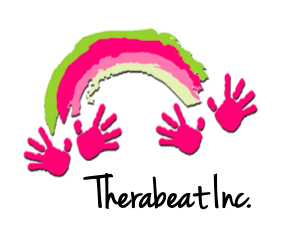December 1, 2021
Kathryn Trujillo
Family-Centered Music Therapy in the Home
Thompson, from the University of Melbourne in Australia, elaborates on the widespread approach of family-centered therapy practice through reflection of case examples and personal experience. Thompson reflects on the family-centered practice model and applies it to Music Therapy (MT) so that early intervention services can support families with children with special needs. From this article, music therapists (MT-BCs) can find support and rationale for a solid family-centered practice method for MT specific sessions. MT, as a field, offers practitioners and families flexibility, in that they are able to travel to family’s homes. Thompson focuses on “promoting interpersonal engagement between children with Autism Spectrum Disorder (ASD) and their parents” (Thompson, p.109) in natural settings, such as their home or preschools with their peers and carers there.
According to literature found by Thompson, ASD is “a group of neurological disorders with lifelong implications. It is diagnosed based on impairments in social interaction, communicative behavior, and repetitive and stereotyped patterns of behavior or interests” (p.109). There are many approaches to interacting with individuals with ASD, to treating particularly undesired behaviors, and improving communication between both child and parent, or between the child and their peers. Family-centered practicing therapists encourage family participation and collaboration during one-on-one sessions. The central tenet of family-centered practice is that “practitioners and families strive to work together in partnership with an emphasis on building the capacity of the family” (p.109). Family-centered practitioners truly focus on relationships and supporting the parent and child bond.
MT-BCs provide fun and enjoyable music-based sessions to encourage participation from all or any member of the family in the safety of their own homes. While working with preschool aged children with ASD, Thompson says that “the active participation of the family in MT sessions is considered an essential part of working with them” (p.110). In a home setting, MT-BCs are able to gather more information about the child with ASD through observation of interactions with other family members, the family dynamic, and in the natural family environment. Together, the family and MT set goals and objectives based on goals identified by the family.
While providing services in the child’s home, MT-BCs are able to share their professional skills with the family. Through reflection, Thompson outlines components of family-centered MT sessions. They are as follows: family-centered practice theory, attune to the child’s mood and behavior, following the child’s lead, enticing the child with motivating activities, presenting with positive affect, acceptance, and affection, MT presenting as a play partner, keeping the child’s anxiety low and assess the need for structure, choice, or control, matching the child’s abilities, and understanding social communication development theories, and finally allowing the child to initiate engagement. By providing therapeutic approaches and interventions within the child’s daily routine, Thompson found that it promotes interpersonal engagement and early social and communication skills which are goals often identified by both the family and treating MT-BC. Family-centered MT sessions allow for growth in interpersonal communication, rapport, and inclusion of all members of the family while providing fun and engaging interventions for the child with ASD.
Reference:
Thompson, G. (2012). Family-centered music therapy in the home environment: Promoting interpersonal engagement between children with Autism Spectrum Disorder and their parents. Music Therapy Perspectives, 30, p.109-116.


